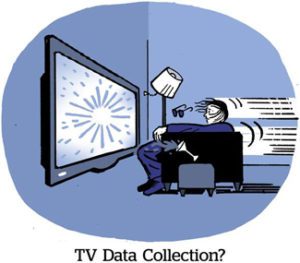TV media executives have long been critical of Nielsen-style audience panels.
But calibration panels are a different story. Unlike audience panels, which rely on a smaller group of people that have been selected to represent a larger group of people, calibration panels match census-level data with device-level data to inform a measurement model.
On Wednesday, smart TV manufacturer VIZIO announced a census-representative panel built using automatic content recognition (ACR) data from Inscape, VIZIO’s ACR data subsidiary.
VIZIO has access to ACR data from roughly 21 million smart TVs.
Innovid is one of the first measurement providers to use VIZIO’s so-called “National Representative Panel (NRP).”
“The TV industry has already established that big data is the answer to measurement and currency,” said Charbel Makhoul, GM and VP of product, data science and analytics at VIZIO.
But big data alone isn’t enough to underpin a measurement currency unless the data is verifiably accurate.
“ACR data plays a major role filling in the gaps of big data sets for TV measurement and planning because it’s device-level data,” Makhoul said.
For its nationally representative panel, VIZIO matched Inscape with third-party identity providers to create household-level IDs. VIZIO then sorted these TV IDs into audience population demos based on the US census so that advertisers can “weight” their buys to optimize targeting and frequency across different demos, Makhoul said.
Based on the TV IDs tied to certain shows, VIZIO can determine where a buyer’s campaign is over- or under-indexing on certain population demos such as, say, Black or Asian Americans, and recommend a “weighing solution” to tip the scales back toward a more balanced reach.
The panel, which consists of 10 million “calibrated” households, is a step toward providing more comprehensive and accurate data for measurement because the viewership data is representative of the total US population, said Aktar Somalya, VP of product management at Innovid.
Buyers can use the NRP to optimize their reach, frequency and impact across VIZIO inventory only. Because the NRP is built around ACR data from only VIZIO screens, using the solution elsewhere wouldn’t be very effective, Makhoul said.
Although VIZIO distributes both linear and streaming content, for now, the NRP is only focused on linear campaign planning and measurement because contractual agreements blocked some streaming content providers VIZIO works with from sharing ACR data with VIZIO to use in its panel for household-level audience matching.
Linear networks weren’t so restricted. VIZIO declined to share why, but it’s possible that the 1988 Video Privacy Protection Act has something to do with it. The law expressly prohibits video content providers from disclosing viewership history that can be linked to an individual.
Still, starting with linear has its advantages, despite the overall shift in consumption behavior to streaming.
Buyers still need to know how their ads are performing on linear networks so that they can plan and measure incremental reach and lift on connected TV, Makhoul said.
Advertisers can still use the current version of the NRP for insights about incremental reach, but “there might be some gaps” in the data compared with the granularity of the NRP’s linear data, he said.
VIZIO does plan on expanding its NRP to eventually include ACR data from streaming partners, but Makhoul told AdExchanger that the next immediate step will be to add IDs for measurement at the individual level, not just the household level.


















